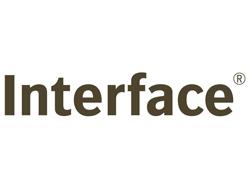Interface Provides Progress Update on Mission Zero
Atlanta, GA, July 20, 2018-Interface announces its 2017 EcoMetrics, demonstrating significant progress toward Mission Zero, which challenges the company to eliminate any negative impact it has on the environment by 2020.
The updated metrics reveal Interface has reduced its greenhouse gas emissions intensity from energy use at manufacturing facilities by an estimated 96% since 1996. This continued investment and dedication to addressing climate change is, in part, what led to the company being named one of the top three global sustainability leaders in the 2018 GlobeScan-SustainAbility Leaders Survey. Interface is the only company to be recognized for 21 consecutive years, remaining in the top four since the study launched in 1997.
The global commercial flooring company in 2016 embarked on a new sustainability mission, Climate Take Back, which moves the company from "doing no harm" to doing good. This new undertaking is focused on addressing the biggest problem facing humanity, global warming. As the company works to bring its Climate Take Back vision to life, it has unveiled products that store more carbon than it takes to make them, including a prototype tile, and subsequently, a new commercially available backing, CircuitBac Green. Interface has engaged the support of industry leaders, customers, partners and sustainability leaders to help achieve its ambitious goals, which was evident through its lobbying efforts and support of California's carpet recycling bill, AB 1158. Most recently, Interface announced Carbon Neutral Floors™ across its entire global product portfolio. This is key to moving the company toward meeting its goals to become restorative to the planet.
Highlights from the most recent EcoMetrics data include:
* The carbon footprint of the average Interface carpet tile product is estimated to be down 66% since 1996. This is a 6% improvement year-over-year attributed to increased use of recycled materials, improved energy efficiencies, use of renewable energy and reductions in carpet face weights.
* 58% of the total raw materials in the products sold were recycled or bio-based, including Interface's luxury vinyl tile (LVT). Excluding LVT, 60% of the materials used to make carpet are recycled or bio-based.
* In 2017, Interface's ReEntry program diverted 13 million pounds of post-consumer carpet from landfills, bringing the total to 360 million pounds. This is a 24 percent increase from 2016's 10.5 million pounds recycled. Interface also lobbied for a recycling law in California that calls for improvements to California's Carpet Stewardship Program, operated by CARE.
* Energy efficiency has improved by 43% since 1996, with 88% of all energy used in Interface's manufacturing sites provided by renewable sources. Globally, 100 percent of electricity used at Interface manufacturing sites is renewable.
* Greenhouse gas emissions intensity from energy use at manufacturing facilities are down 96% since 1996, due to both facility improvements and renewable energy use.
* Water use intensity is down 88% since 1996.
The Net-Works program collected and shipped 163,000 pounds of discarded fishing nets to yarn supplier Aquafil-the highest volume of nets shipped in the program's history. Since the program began in 2013, Net-Works has collected and shipped 317,000 pounds of discarded fishing nets to Aquafil.
Related Topics:Interface
